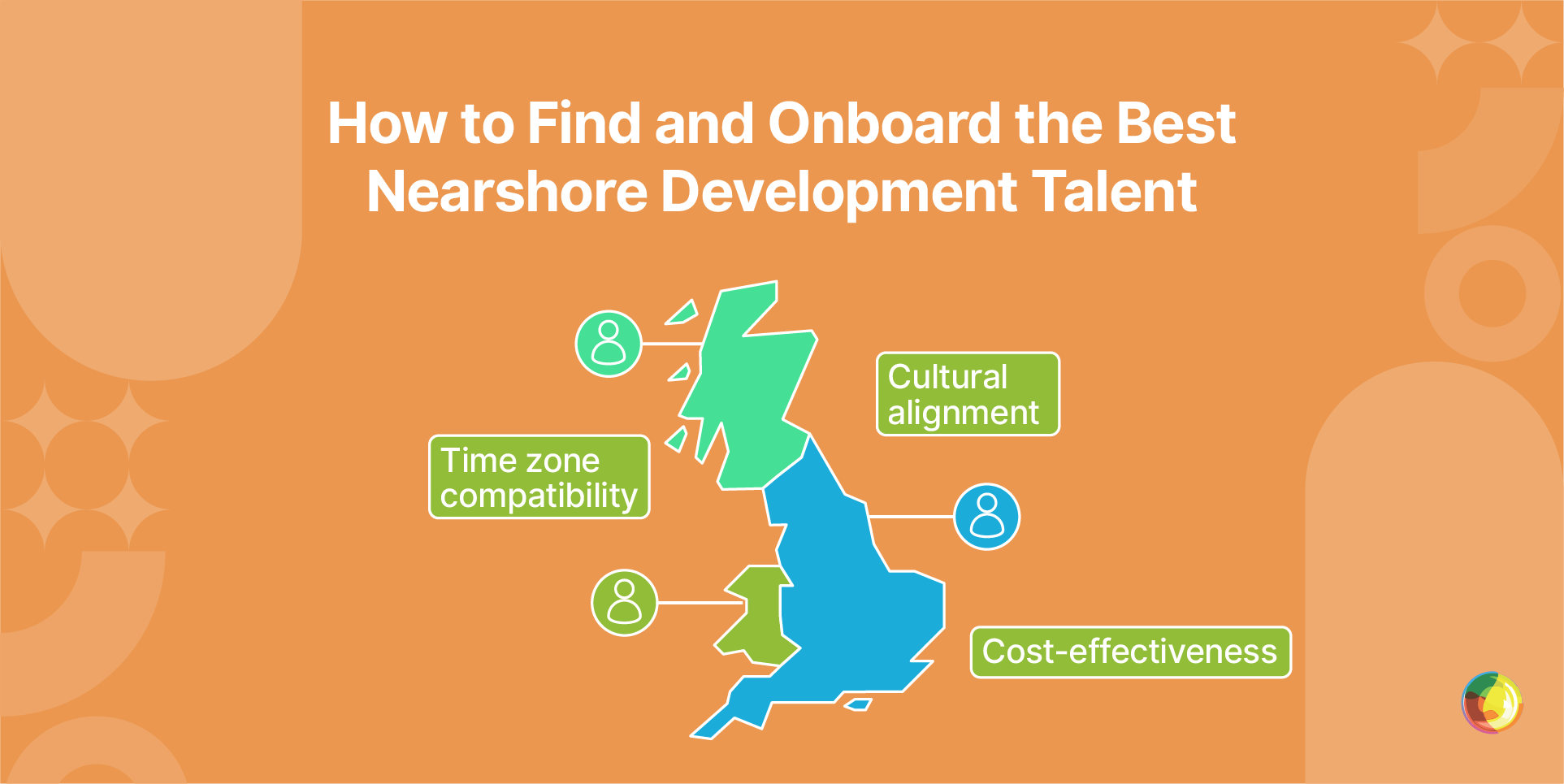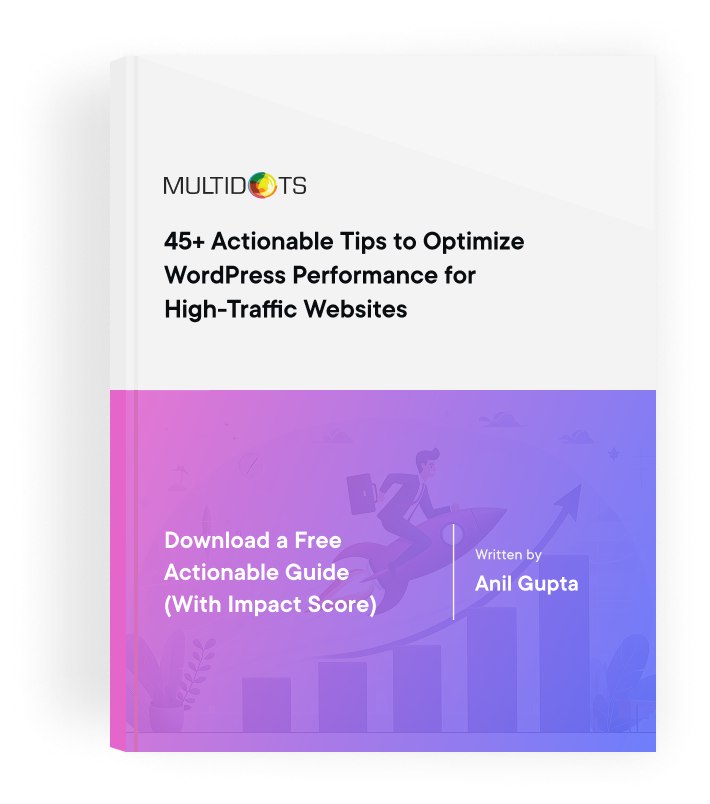How to Find and Onboard the Best Nearshore Development Talent
Discover how to find top nearshore talent for your project. Learn where to look, what to ask, and how to build a high-performing remote team.

Table of Contents
Key Takeaways
- Nearshore staff augmentation bridges talent gaps fast without compromising on quality or communication.
- Real-time collaboration and timezone alignment speed up delivery and reduce project friction.
- Access high-caliber, cost-effective talent for advanced projects like AI, integrations, and WordPress at scale.
- A structured approach to hiring, onboarding, and communication maximizes success and ROI.
So, your dev team’s at max capacity. Deadlines are looming. And cloning your lead engineer sadly isn’t an option.
Enter: Nearshore staff augmentation – a smart, no-drama way to plug your talent gaps without diving headfirst into the outsourcing abyss.
Nearshore outsourcing involves bringing in talent from neighboring regions that sit comfortably within your time zone sweet spot, usually no more than 2–3 hours apart.
It’s a rising trend, and savvy CMOs and CTOs are quickly catching on. In this guide, we’ll walk you through the whole journey, from scouting the right talent to getting them up and running. Let’s get started.
Onshore vs Offshore vs Nearshore Staff Augmentation
- Onshore hiring: Working with teams in your own country – more expensive, but communication is easy and fast.
- Offshore setups: Hiring from distant regions (often 5+ time zones away) – cheaper, but can lead to delays and awkward meeting times.
- Nearshore staff augmentation: Teams in nearby countries – more affordable than onshore, with better time zone alignment and cultural compatibility.
For tech projects where timing, collaboration, and speed are everything, nearshore staff augmentation is becoming the ultimate solution. Let’s take a look at the benefits of nearshore staff augmentation in more detail.
Benefits of Nearshore Staff Augmentation
Tackle Talent Gaps, Fast
Nearshore staff augmentation offers a reliable way to plug technical talent gaps quickly, without losing momentum on key projects. Whereas traditional hiring can take months, nearshore partners hit the ground running, keeping your projects moving when both time and local talent are thin on the ground.
Tap into High-Calibre Talent
Many nearshore regions are quietly overflowing with razor-sharp tech talent, especially those with strong educational ecosystems and thriving tech hubs. HackerRank’s Developer Skills Report agrees: These folks come packing niche skills, fresh thinking, and advanced technical capabilities shaped by highly competitive local markets.
Bottom line: You get access to high-calibre skills that are either scarce or eye-wateringly expensive at home, especially for cutting-edge work like AI, enterprise integrations, or website development.
Drive Down Costs Without Compromising Quality
The cost advantages go well beyond hourly rates:
- Recruitment costs.
- Training overheads.
- Office space and equipment.
Companies can cut back on pretty much anything that burns budget without adding value, freeing up funds that can be reinvested into product development or marketing.
Collaborate in Real Time
No more timezone gymnastics. With nearshore teams you get real-time feedback, faster decisions, and no midnight standups. Add in strong English proficiency and a closer cultural fit, and you’ve got smooth communication that doesn’t require a 2AM caffeine-fuelled conference call.
Speed Up Time to Market
Nearshore teams can be your secret weapon when you’ve got an aggressive timeline. Built to be agile, they slot in fast, scale with you, and help clear bottlenecks without breaking your stride.
The result: Your products hit the market a lot faster – a serious edge in competitive environments.
When done right, nearshore staff augmentation goes beyond a resourcing solution. It’s a strategic lever for faster delivery, sharper innovation, and long-term growth.
However, to unlock these benefits, it’s crucial to approach nearshore staff augmentation with the right strategy, structure, and mindset. Let’s dive into it.
How to Effectively Implement Nearshore Staff Augmentation
Step 1. Define the Role
Before you start scouting talent, get clear on your real needs.
- What problem are you solving? Is it a missing skillset, bandwidth issue, or both?
- Which skills matter most? Be specific – think languages, tools, frameworks. Are you looking for niche specialists or versatile generalists?
- What level of experience do they need? Entry-level support or senior expertise?
- What soft skills are essential? Communication, problem-solving, team fit?
- What’s the timescale? Is this a short-term project or are you in need of longer-term support?
Craft clear, focused job descriptions that go beyond buzzwords. Include:
- Core technical skills and experience.
- Context around the project and expectations.
- Communication style and team culture fit.
Your answers will shape everything from contract terms to how you onboard.
Step 2. Choose the Right Agency
Not all agencies are created equal. Do more than a quick Google search.
Look for agencies that:
- Have experience in your industry and tech stack.
- Share details about their hiring process and retention rates.
- Offer clear quality control and developer support.
Questions to ask:
- Do they have relevant case studies or testimonials?
- How do they handle time zone overlaps and daily collaboration?
- Can their contracts flex as your needs change?
It’s not just about hourly rates. Look at the full picture:
- Cost vs. value.
- Flexibility to scale up or down.
- Their ability to adapt with your team.
Step 3. Set Clear Goals and Expectations
Before anyone touches a keyboard, document exactly what success looks like. Think deliverables, timelines, KPIs. And no, not just "code quality" or "ticket velocity". You need to tie your measureables to business outcomes that actually move the needle.
Then, set up your comms playbook:
- How often will you meet? Zoom or Slack?
- Who reports to whom?
- What tools are being used?
- Who’s online when, and how fast should they respond?
Clarity is your best friend here. Set the tone early so everyone’s rowing in the same direction. Many projects fail from misalignment, not missing skills.
Step 4. Interview Candidates
Don’t skip the interviews just because an agency insists their candidates are top-tier. Loop in your tech leads. Run real-world scenarios they’d face on the job. Ask: "How would you handle this exact challenge?"
Make sure you also evaluate:
- Technical ability: Via code tests or live problem-solving.
- Communication skills: Can they clearly explain their thinking?
- Cultural fit: Will they mesh well with your team’s rhythm and style?
Optional, but useful:
- A short trial project or paired session to see them in action before you commit.
And be sure to assess their language skills. Even the sharpest coder can cause chaos if communication breaks down.
Step 5. Onboard Strategically
Now you’ve picked your dream team, don’t ghost them. Set up a proper onboarding plan:
- System access: Give them logins, tools, and permissions from day one.
- Project docs: Share key documentation so they understand what they’re building and why.
- Cultural context: Explain how your team works, communicates, and makes decisions.
- Ways of working: Clarify sprint cadence, review processes, and collaboration norms.
- Internal comms: Add them to Slack, email threads, calendars, whatever keeps them in the loop.
In those first few weeks, keep check-ins regular, and ensure they have everything they need to succeed – codebases, internal docs, Slack channels, key stakeholders.
Better yet, buddy them up with an in-house teammate. One-on-one pairings are a smart way to fast-track context-sharing and make new recruits feel part of the team.
And finally: Keep a feedback loop. Don’t let small integration wrinkles turn into facepalm-worthy blockers. A little attention early on can save you a world of pain later.
Scale Your WordPress Capabilities with Multidots
If you need top-tier WordPress talent yesterday, nearshore staff augmentation gives you instant access to skilled professionals, trims your costs, and speeds up delivery – especially handy when your project calls for deep WordPress expertise.
As a WordPress VIP Gold Partner, Multidots brings the best of both worlds: Nearshore efficiency and elite platform know-how. It’s how CMOs hit technical goals without dropping the marketing ball.
Our expertise includes:
- Building enterprise-grade, high-traffic websites.
- Migrating complex platforms to WordPress.
- Supercharging site performance.
We’re the go-to team for delivering critical launches on time, to spec, and with a keen eye on the marketing impact of every single tech choice.
We’ve led platform rebuilds and mission-critical migrations for some of the world’s biggest brands, so we understand what’s at stake. Our focus is always on building fast, scalable sites that not only perform technically but drive real business results.

So whether you’re migrating, scaling, or racing toward a high-stakes launch, Multidots’ nearshore staff augmentation is purpose-built for your needs.
Stop losing time to hiring delays. Get in touch with Multidots, and get the WordPress talent you need now.
Feel free to schedule a quick call with our team.
Contact Us
